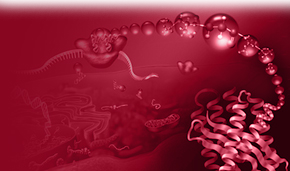|
|

|
|
Science Sparks @ ACTREC
|
 12 July 2021 12 July 2021
|
Vol. No. 10; Issue No. 483 |
|
|
Publications
|
|
1. Singh GP, Dholam KP, V Gurav S (2021). Revisiting Stage II MRONJ. Proposal for modification of AAOMS staging system: An institutional experience. Oral Diseases.
2. Pramesh CS, Babu GR, Basu J, Bhushan I, Booth CM, Chinnaswamy G, Guleria R, Kalantri SP, Kang G, Mohan P, Mor N, Pai M, Prakash M, Rupali P, Sampathkumar P, Sengar M, Sullivan R, Ranganathan P (2021). Choosing Wisely for COVID-19: ten evidence-based recommendations for patients and physicians. Nature Medicine.
3. D'Silva SZ, Phuntsok T, Tambe M, Rajak J, Singh M (2021). Identification of a novel HLA-A*24 allele, A*24:537, identified in three individuals in an Indian family. HLA.
4. Phuntsok T, D'Silva S, Tambe M, Singh M (2021). Identification of the novel HLA-B*35:03:01:22 allele in an individual of Nepalese origin. HLA.
5. D'Silva SZ, Tambe M, Rajak J, Phuntsok T, Singh M (2021). Identification of the novel HLA-C*14:02:01:22 allele in an Indian individual. HLA.
6. Anand S, Chatterjee A, Gupta T, Panda P, Moiyadi A, Epari S, Patil V, Krishnatry R, Goda JS, Jalali R (2021). Upfront therapy of aggressive/high-risk low-grade glioma: single institution outcome analysis of temozolomide-based radio-chemotherapy and adjuvant chemotherapy. World Neurosurgery.
7. Gupta T, Thakkar P, Kalra B, Kannan S (2021). Hydroxychloroquine in the treatment of coronavirus disease 2019: Rapid updated systematic review and meta-analysis. Reviews in Medical Virology.
8. Kalshetty A, Menon B, Rakshit S, Bhattacharjee A, Basu S (2021). Correlation of lesional uptake parameters and ratios with miPSMA score and estimating normal physiological concentration: an exploratory analysis in mCRPC patients with 68Ga-PSMA-11 PET-CT. Journal of Nuclear Medicine Technology.
|
|
|
|
|
|
|
Legends of Science
|

|
Rabindra Nath Chakravarti
R N Chakravarti obtained his DPhil Medicine from University of Kolkata in 1961. He specialized in pathology and experimental medicine. He carried out research on the pathogenesis and therapeutic control of atherosclerosis, thrombosis and ischemic heart disease. He showed that diets rich in polyunsaturated fatty acids can regress atherosclerosis. He also discovered that indomethacin, a non steroidal anti inflammatory drug can inhibit the atherogenic process. This was also a potent anti hypertensive agent in experimental renal hypertension. He established the Department of experimental medicine at the PGIMER, Chandigarh. Dr. Chakravarti was the recipient of Dr B C Roy National Award, Dr VR Khanolkar Award of National Academy of Medical Sciences. He was the founder President of Indian Society for Atherosclerosis Research
|
|
| |

|
Dakshina Ranjan Bhattacharya
Dakshina Bhattacharya obtained his PhD from University of Dublin in 1924. He specialized in cytology and ichthyology. He established the phenomenon of infiltration of cytoplasmic inclusions in egg cells. He made several important contributions in the fields of cytology and ichthyology. He was Dean, and later Vice-Chancellor, University of Allahabad. He was the President of National Academy of Sciences. He was the Fellow of Zoological Societies of France and India.
|
|
| |
|
|
Do You Know?
In 2012, a study showed that cells lacking p53 are exquisitely sensitive to serine depletion, thus suggesting that removal of this amino acid through dietary changes or pharmacological approaches might have therapeutic potential in treating p53-deficient tumours.
|

|
|
|
Cancer News
|
| |
|
New cancer findings can give wider access to immunotherapy
|
|
06 July 2021, ScienceDaily
|
|
Researchers have shown how pharmacological activation of the protein p53 boosts the immune response against tumors. The results can be of significance to the development of new combination therapies that will give more cancer patients access to immunotherapy...
|
|
|
| |
|
|
|
Study sheds light on mechanism of liposome accumulation in tumors
|
|
08 July 2021, EurekAlert
|
|
Liposomes, a type of nanoparticle, are tiny, fat-soluble vesicles (small, fluid-filled sacs) made from lipids, or fats. They are mainly used to deliver cancer-fighting drugs to tumors, since liposomes are not water soluble and can protect some drugs against breaking down in the body...
|
|
|
|
|
| |
|
|
|
|
© 2021 Advanced Centre for Treatment, Research and Education in Cancer (ACTREC)
|
|
